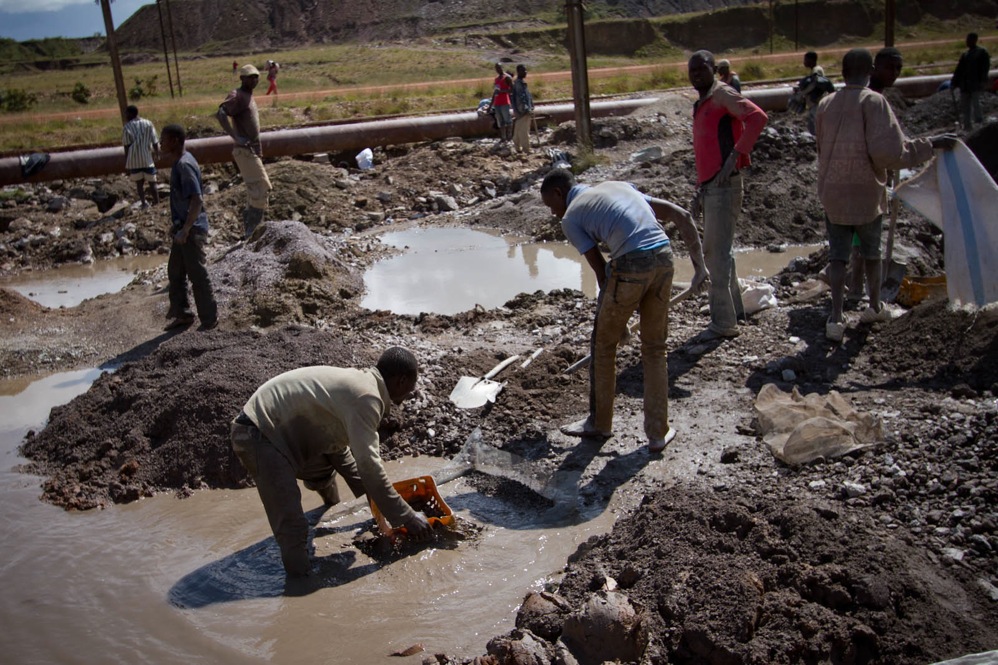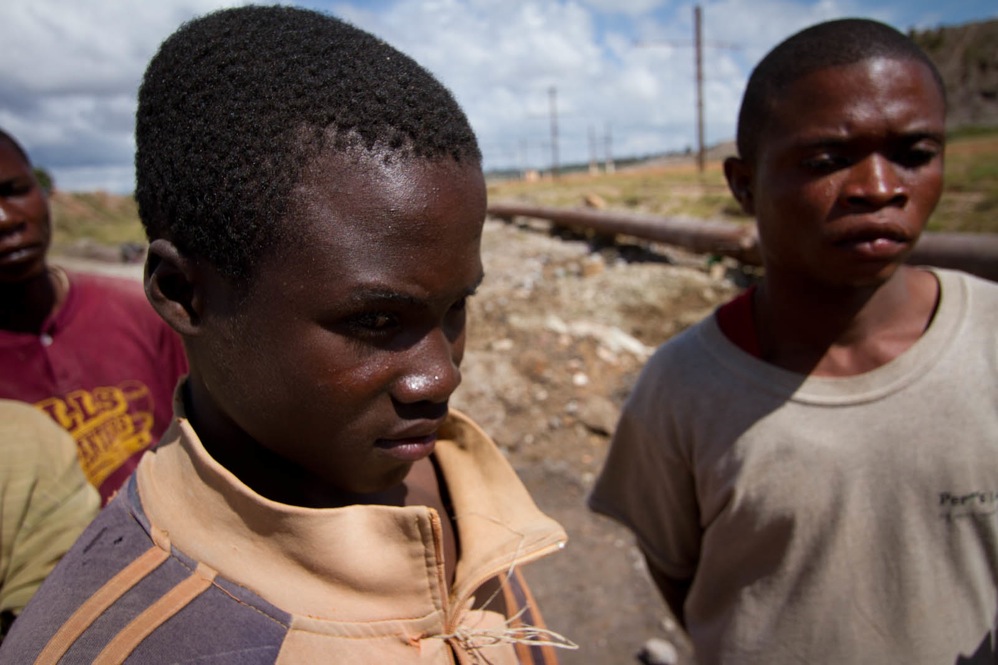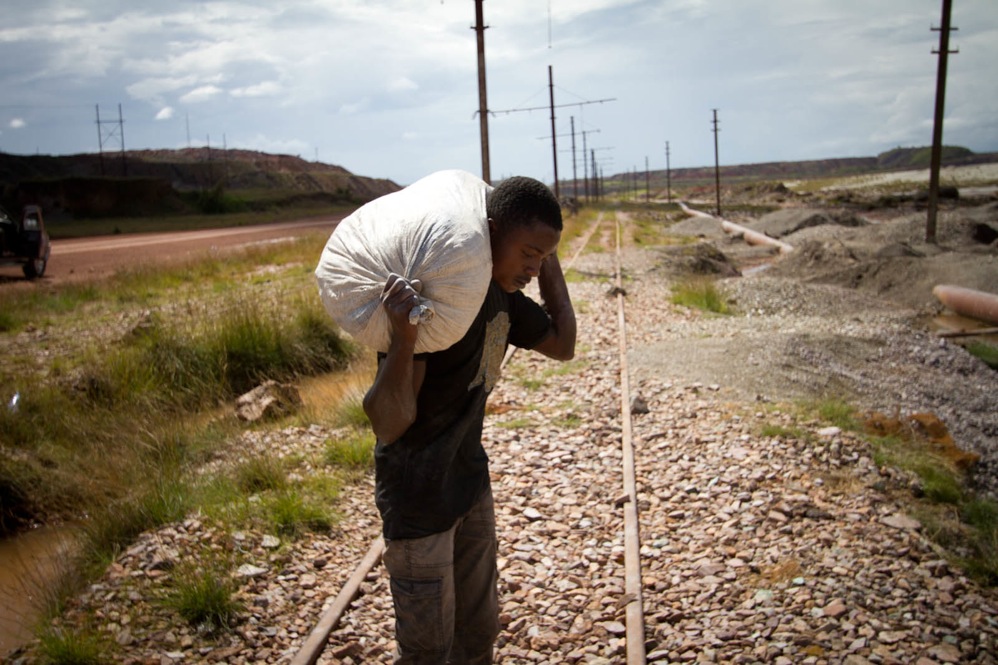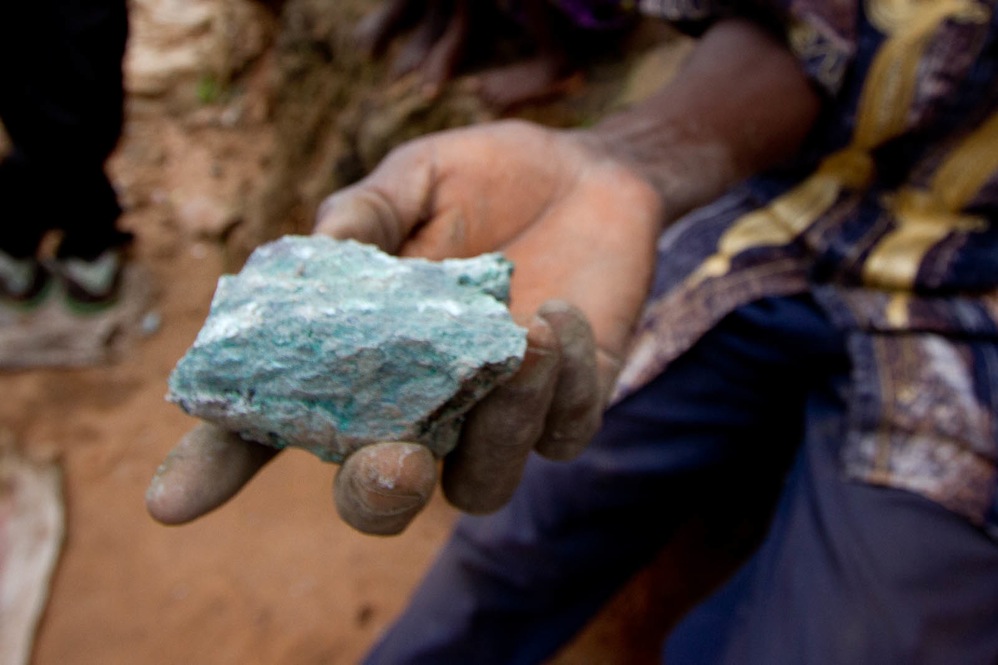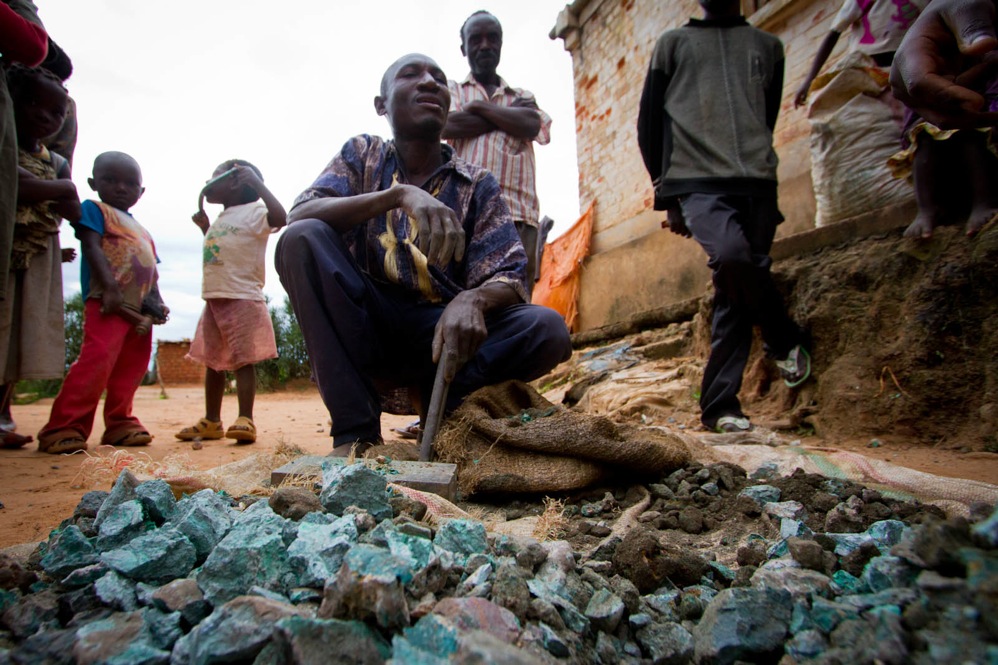From the book, China’s Congo Plan
Congo
Congo’s subsistence miners dig for their livelihoods
GlobalPost/GroundTruth‘Artisanal’ mining is now the country’s leading profession — attracting adults and children alike. Chinese investment is driving its growth.
KOLWEZI, Congo — Patrick Bwana strains his body as he thrusts a full-sized shovel into a patch of rocky ground. He is 12 years old. He looks 9. He speaks with his eyes fixed on the ground. “I used to go to school, but my father died, and no one paid for my studies anymore,” he says.
Bwana works from around 6 in the morning to about 3 in the afternoon, lugging around bags of rock that seem to weigh as much as he does. He says he can earn $5,000 francs a day doing this. That’s about $5. He hopes he can save enough to pay his own school fees, and return to school.
Bwana is one of tens of thousands of child laborers estimated to work in Congo’s mineral sector. Most take to the work out of necessity, to help their parents earn enough to feed their family. Child labor is illegal in the Congo, as is much of the artisanal mining that takes place in and around Kolwezi on mineral reserves owned or leased by foreign or Congolese companies.
The forces that shape Congo’s artisanal mining sector are many: A worldwide demand for copper and other base minerals for manufacturing; the inability of many Congolese to find any other sort of lucrative work; the absence of government regulation. But ask any Kolwezi miner who’s responsible, and you’re likely to hear just one answer: “The Chinese.”
Read the full story at GlobalPost or NPR, or at the Pulitzer Center on Crisis Reporting, which provided funding for the project.
Income inequality: In Congo, a tale of two cities
GlobalPost/GroundTruthIn Africa’s fastest-growing city, a new haven for Congo’s wealthy burdens some of its poor.
KINSHASA, Congo — On one side of the water, hand-carved wooden canoes navigate the marshy canals of a crowded fishing village. Unpainted cement houses line muddy dirt streets where women sit at stands, selling the day’s catch.
On the other side, where the fishermen used to cast their nets, a posh private city is being raised from the bottom of the Congo River. Pumping millions of cubic meters of sand, the British hedge fund Hawkwood Properties is developing 1600 acres of water to become a tranquil residential haven complete with swimming pools, schools, grocery stores and a sports complex.
A more striking portrayal of income disparity in Congo than Kinshasa’s Cite du Pecheur (Fisherman’s City) and the upcoming La Cite du Fleuve, (City of the River), would be difficult to come by. But Hawkwood’s private development is a logical progression of life in Africa’s fastest-growing city.
See the full story and video at GlobalPost. This story was supported by a grant from the Pulitzer Center on Crisis Reporting.


